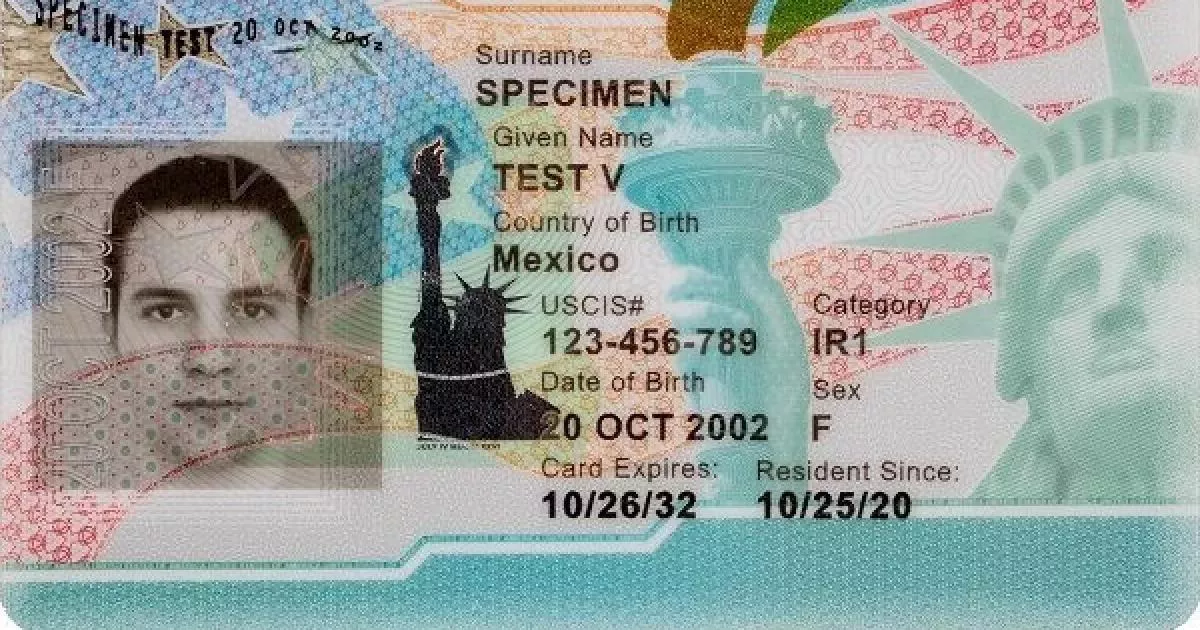A Green Card, or Permanent Resident Card, signifies that a person has been granted permanent residency in the United States, making them a Lawful Permanent Resident (LPR). As of 2024, there are approximately 12.8 million green card holders in the U.S., with around 9 million eligible for citizenship. About 18,700 Green Card holders serve in the U.S. Armed Forces. The Green Card is a crucial document for immigrants seeking to live and work permanently in the U.S.
June 3, 1921: Registry Provision Date
The registry provision date, initially developed in 1929, was first set to grant residency to individuals who entered the country before or on June 3, 1921.
July 1, 1924: Registry Date Moved to July 1, 1924
The registry provision date was moved to July 1, 1924, as part of aiding the growing number of illegal immigrants.
1924: Immigration Act of 1924
In accordance with the Immigration Act of 1924, the "Alien Registration Receipt Card" would indicate "Perm.Res" on the back.
1929: Registry Provision Date First Developed
In 1929, the registry provision date was first developed with the intention to aid in the growing number of illegal immigrants.
1933: Formation of the Immigration and Naturalization Service
In 1933, the Immigration and Naturalization Service was formed as part of the Department of Labor.
July 1, 1940: Registry Date Moved to July 1, 1940
The registry provision date was moved to July 1, 1940.
1940: INS Moved to Department of Justice
In 1940, the Immigration and Naturalization Service was moved under the Department of Justice, along with the Nationality Act of 1940. Also during the 1940s, the predecessor to the "Permanent Resident" card was the "Alien Registration Receipt Card".
June 30, 1948: Registry Date Moved to June 30, 1948
The registry provision date was moved to June 30, 1948.
1952: Enactment of the INA
In 1952, the U.S. Congress enacted the INA, defining 'alien' as any person not a citizen or national of the United States.
1958: 1958 Act
Through a set of congressional amendments that culminated in the 1958 Act, the requirement for non-citizens to be eligible only if they are not subject to deportation was removed.
January 1, 1972: Registry Date Moved to January 1, 1972
The registry provision date was moved to January 1, 1972, as part of the Immigration Reform and Control Act (IRCA).
1986: Immigration Reform under IRCA
As part of immigration reform under the Immigration Reform and Control Act of 1986 (IRCA), eligible persons applying for permanent residency based on marriage or as an investor are granted residency on a conditional basis for two years.
1986: Last Registry Update
Since the last registry update in 1986, a total of 385 individuals have been granted a green card.
September 30, 1996: IIRIRA Signed into Law
On September 30, 1996, President Clinton signed the Illegal Immigration Reform and Immigrant Responsibility Act (IIRIRA) into law.
1996: Further Reform Enacted in IIRIRA
Further reform enacted in the Illegal Immigration Reform and Immigrant Responsibility Act of 1996 (IIRIRA) continued the practice of granting permanent residency on a conditional basis for two years to eligible persons applying based on marriage or as an investor.
December 31, 2000: Expiration of the LIFE Act
On December 31, 2000, the LIFE Act, which created a mechanism to unite families of green-card holders through the introduction of a "V visa", expired, and V visas are no longer available.
2003: INS Abolished, Replaced by DHS
In 2003, the Immigration and Naturalization Service (INS) was abolished and replaced by the current Department of Homeland Security (DHS), which then decided on applications for permanent resident cards (green cards).
2006: Waiting List Estimates in 2006
The Augusta Chronicle reported in 2006 that an estimated two million people were on waiting lists in anticipation of becoming legal and permanent residents of the United States.
May 11, 2010: New Green Cards with RFID Chips
Since May 11, 2010, new green cards contain an RFID chip and can be electronically accessed at a distance.
2018: New Naturalization Program Initiated
In the summer of 2018, a new program was initiated to assist LPRs in preparing for naturalization.
August 12, 2019: USCIS Announces New Rule Restricting LPR Status
On August 12, 2019, the U.S. Citizenship and Immigration Services (USCIS) formally announced a new rule restricting poorer immigrants from attaining LPR status. Under the rule, legal immigrants who have received public benefits such as Supplemental Security Income, Temporary Assistance for Needy Families, the Supplemental Nutrition Assistance Program, Medicaid, and public housing assistance for more than a total of twelve months may be classified as a "public charge" ineligible for permanent residency.
October 15, 2019: Effective Date of New Rule Restricting LPR Status
The new rule announced on August 12, 2019, restricting poorer immigrants from attaining LPR status was slated to take effect on October 15, 2019. This rule could classify legal immigrants receiving public benefits as a "public charge" ineligible for permanent residency.
October 2, 2020: USCIS Declares Inadmissibility Based on Communist Affiliation
On October 2, 2020, the USCIS declared the inadmissibility based on belonging or affiliation to Communist parties or any, unspecified, "totalitarian party".
February 2, 2021: Biden Orders Review of Public Charge Rule
On February 2, 2021, President Biden signed an executive order directing the U.S. Department of Homeland Security to review the Public Charge rule.
2024: Green Card Statistics
As of 2024, it is estimated that there are 12.8 million green card holders in the United States, with nearly 9 million eligible for citizenship and approximately 18,700 serving in the U.S. Armed Forces.
2025: Trump Initiates Deportation Proceedings against Permanent Residents
In 2025, President Donald Trump began deportation proceedings against permanent residents Mahmoud Khalil, Yunseo Chung and Mohsen Mahdawi related to political activism.
Mentioned in this timeline
The United States of America is a federal republic located...

Justice in its broadest sense is the concept of treating...

September is the ninth month of the year in the...
Trending
8 months ago Maldives bans Israelis in solidarity with Palestinians amid Gaza conflict escalation.

3 months ago Brock Bowers' Injury Concerns: Raiders' Crosby Also Added to Injury Report

2 months ago Edison Upgrades South Pasadena Electrical Grid Amidst Storm Recovery, Lifting Evacuation Orders

John Stamos is an American actor and musician who rose to fame as Blackie Parrish on General Hospital earning a...

8 months ago Austin Hays emerges as a top Fantasy Baseball Waiver Wire pickup.

1 month ago Maxxine Dupri, assisted by AJ Lee, dethrones Becky Lynch for Intercontinental Title on Raw!
Popular

Tucker Carlson is an American conservative political commentator known for...

XXXTentacion born Jahseh Dwayne Ricardo Onfroy was a controversial yet...

Ben Shapiro is a prominent American conservative political commentator media...

Candace Owens is an American conservative political commentator and author...

William Franklin Graham III commonly known as Franklin Graham is...

Ursula Gertrud von der Leyen is a prominent German politician...
